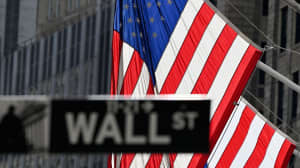In one of the more interesting takeaways from the Federal Reserve’s policy update on Wednesday, Chairman Jerome Powell tried to convince traders that their thinking behind as many as six rate cuts this year is flawed. It didn’t work.
On Thursday, traders largely brushed him off.
Fed funds futures continued to trade around levels that mostly indicate the central bank will cut rates in six quarter-point increments by December, which would bring the fed-funds rate target down to 3.75%-4% from a current level of 5.25%-5.5%. Traders even saw a 25.8% chance of more than six cuts in 2024. However, they fell into line with Powell’s guidance on the likely timing of the first move, by pushing that out to May instead of March.
Meanwhile, 10-
BX:TMUBMUSD10Y
and 30-year Treasury yields
BX:TMUBMUSD30Y
finished lower for a fourth straight session. Government debt rallied around expectations for lower inflation, economic weakness, a policy mistake by the Fed, or a combination of all these things.
Read: Markets anticipate threat of Fed ‘policy mistake’ after Powell pushes back on March rate cut
In a nutshell, Powell tried to punch a hole in the market’s thinking behind what’s known as maintenance rate cuts, but it didn’t entirely work.
Maintenance rate cuts are based on the view that the central bank will need to lower interest rates simply because inflation is falling and to keep borrowing costs from becoming too restrictive. This line of reasoning is largely why traders continue to cling to expectations that the central bank will lower rates by more than the three quarter-of-a-percentage-point increments which policymakers have penciled in for 2024.
“He definitely threw cold water on the market’s expectations for as many as six rate cuts this year and wanted to correct those expectations,” said Eric Sterner, chief investment officer at Apollon Wealth Management, which manages around $7 billion from Mount Pleasant, S.C. “This has been going on for two years where he will say something, there will be an initial reaction, and then investors just kind of brush him off. It’s like Groundhog Day, where it keeps happening over and over again.”
“It doesn’t matter if investors are confident that we have inflation beat. What matters is if the Fed thinks it has inflation beat,” said Sterner, who expects policymakers to cut rates in June and by a total of three or four quarter-point moves this year. “The consequences of this are that markets are set up for a repricing, with downside risk to equity markets and the possible need for a downgrade in corporate-earnings estimates for the rest of this year.”
On Thursday, all three major U.S. stock indexes
DJIA
SPX
COMP
closed higher, with the Nasdaq Composite jumping 1.3%, even as the bond market’s rally pointed to lingering concerns about the potential for economic distress.
Worries about regional banks have re-emerged after New York Community Bancorp
NYCB,
Bond traders are also focused on the likelihood that inflation will keep falling, putting them somewhat at odds with policymakers’ fight against sticky price gains. Core PCE inflation, the Fed’s preferred gauge, is comfortably below 2% on a 6-month annualized basis. The concern of traders is that by leaving the fed-funds rate target where it currently is, the inflation-adjusted real rate may end up restricting the economy by too much.
Derek Tang, an economist at Monetary Policy Analytics in Washington, said the market appears to be discounting Powell’s “posturing.” At some point, he added, “the gap with market expectations may become so big that policy makers can’t ignore it.”
“The market is right to have a healthy dose of skepticism about what Powell has said,” Tang said via phone on Thursday. That’s because traders may be “more sensitive to what’s happening under the hood of the economy, where there may be pockets of weakness like banking or the labor market.”
Meanwhile, the central bank seems more worried about upside risks to inflation, as articulated by Powell during his post-meeting press conference on Wednesday. Powell told reporters that the Fed won’t likely be able to “mechanically” adjust policy as inflation comes down. Other officials, like Fed Gov. Christopher Waller, have also pointed out that there’s no need for officials to move as quickly as they have in the past to lower rates.
See also: Fed’s Waller sees interest-rate cuts this year, but nothing ‘rushed’
U.S. economic growth remains strong, judging by last week’s preliminary fourth-quarter GDP reading. And economists expect this Friday’s official jobs report to show the unemployment rate remaining relatively low, at 3.8% for January, with 185,000 new jobs created despite the highest interest rates in more than two decades.
Powell “was a bit unsuccessful in walking back market expectations,” said Dan Eye, chief investment officer of Pennsylvania-based Fort Pitt Capital Group, which manages $5 billion in assets. “We’ve seen a dramatic easing in financial conditions since late October, and that’s not what Fed officials want to see if they are still battling against inflation.”







